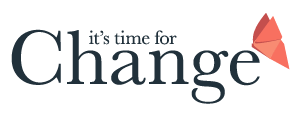Occupational Health: Real Value
When you think ‘Occupational Health’ (OH), what springs to mind? Blood pressure checks and musculoskeletal questionnaires? More recently, wellbeing has been added to the standard list of services for most OH practitioners in recognition that this has a significant impact on work, and that work affects our ability to function well emotionally. Their advice on employees’ health enables recommendations and adjustments to ensure safe working, including the prevention and reduction of work-related ill-health such as stress, and fitness to work.
Beyond Assessment and Recommendations
But what about the provision and practice to improve wellbeing in the workplace? Where does OH fit into that of the process? In a new report by SOM (Supporting Occupational Health and Wellbeing Professionals), ‘The Value of Occupational Health to Workplace Wellbeing’ published in December 2019, OH professionals should be more involved in the provision to get wellbeing right.
A Joined-Up approach
OH are well placed to inform and support the provision of wellbeing services. The report recommends that they need to work more with other professional groups to improve mental-health outcomes, ensuring a more joined up approach rather than working in silos. Mental health and wellbeing cannot be the responsibility of one person in an organisation. The report suggests this is for two reasons:
“Firstly, some programmes might be tied to wider employer initiatives such as job redesign, flexible working, employee benefits, diversity and inclusion and cultural transformation.
Secondly, the benefits of wellbeing programmes might not be seen explicitly in health outcomes, for example through employee engagement or staff retention.”
It still amazes me how many businesses give an individual the role of being responsible for wellbeing, without any realisation that this is near-impossible without a team providing a joined-up approach. It would be like an MD working without a management team, or the prime minister working minus a cabinet. So, who should be involved in the big picture? Occupation Health, HR, people at management level to ensure it has the status, Learning and Development? Everyone has a part to play; they all offer different perspectives and knowledge and skills; they can have more influence working across different parts of a company; they can pool resources and jointly plan and problem solve. Ask yourself, who else in your business has something to offer to this essential development? Arguably everybody – what is each person’s role to play?
Do You Have It All?
It is likely that, currently, the ‘dream team’ lacks some of the knowledge and skills they need to implement a successful drive for change in the wellbeing arena. A useful starting point is to collate the resources you do have, unpicking them to be clear about what they really offer. For example, does a Mental Health First Aider know about shaping a culture that supports people showing vulnerability and transparency, and practices that support good wellbeing for all employees? Does your HR focus on systems and processes or people development? A role title can mean so many different things. You need to be clear about what it is you can offer collectively and where the gaps are.
Next, identify what the needs are in your company. What are you already aware of? How are you going to find out about your blind spots? How are you going to engage people in this process so that are open and honest, and not fearful of judgement, repercussions or simply don’t believe it will make a difference?
SOM’s report identifies four major areas of knowledge, skills and competencies required by OH practitioners to implement workplace health and wellbeing programmes. These are:
- building the business case for health and wellbeing
- acquiring and using evidence
- knowledge of health and wellbeing
- building and sustaining a programme of activities.
An additional area of skill, noted in the report, that provides value to workplace health and wellbeing programmes is related to change management processes.
Don’t Do It Alone!
For support with skilling up your team, increasing their confidence and identifying the strengths and gaps in your organisation, get in touch. I provide a range of workshops covering the 5 aspects highlighted above, leadership coaching, Masterminds and a Workplace Insight process to support your journey.
Get people right, get business right.
Do get in touch to have a chat! lisa@itstimeforchange.co.uk
Ref: The Value of Occupational Health to Workplace Wellbeing, SOM, December 2019




